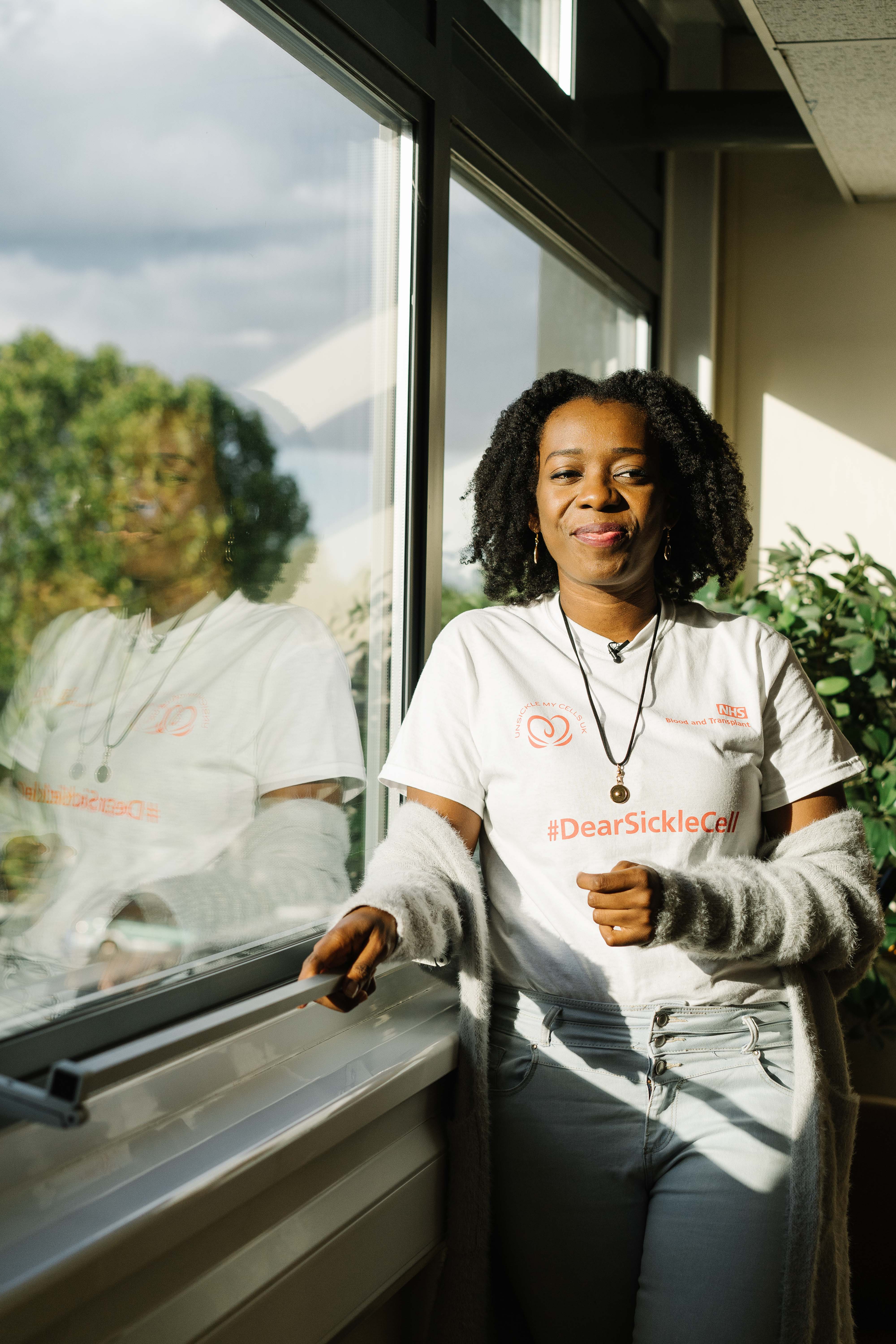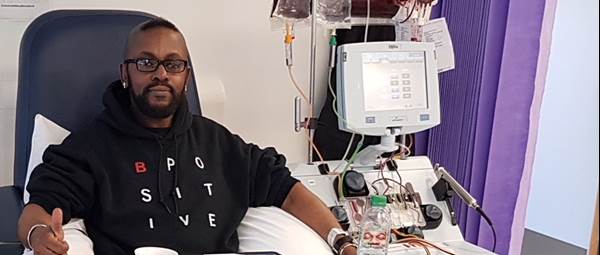“Sickle cell has put me through pain, but I’ve been able to find joy”
Mary Adeturinmo is using her own experience to raise awareness about sickle cell and encourage more black people to become blood donors.
 “For most of my life, my sickle cell had been quite manageable but the moment I got to university things took a turn. I was in and out of hospital, trying various interventions, spending more time there than in my actual home. I had psychological support, went to a pain management clinic, and tried different types of medication but it was all to no avail.
“For most of my life, my sickle cell had been quite manageable but the moment I got to university things took a turn. I was in and out of hospital, trying various interventions, spending more time there than in my actual home. I had psychological support, went to a pain management clinic, and tried different types of medication but it was all to no avail.
“Eventually, I started receiving manual blood transfusions and then I was quickly moved to automated blood exchanges. I was so appreciative to be put on the exchange programme, although I didn’t see the immediate benefits that I had heard so much about. (But then)
“I started to understand what people meant when they said they felt the transformative effects of exchange transfusions. Now, when I go in and have my exchanges, every five weeks, I feel vitalised and like a brand-new person.”
130 donors per year help me
“I was adding it up, how many people have to donate their red cells for me to have a decent quality of life and it’s about 130 people per year.
“In 2017, I joined the B Positive choir after meeting other people from the community and seeing a post on Instagram about the creation of a choir. It’s for those of us with sickle cell or who have close friends or family with the condition. My mum and I both joined with an open mind, attending rehearsals and performances.
“The choir grew and eventually we performed at the MOBO awards and made it to the live shows of Britain’s Got Talent. I fell ill during this time, but I was able to support from the audience. I was so grateful to have the opportunity to raise awareness for blood donation and achieve goals I had set for myself along the way.
“I am an Events and Outreach Ambassador with NHS Blood and Transplant. I’m also currently studying Healthcare and Design at university part-time so that I can manage my health and still do projects at work.”
Ro blood is used to treat all the conditions that other blood types are used for. Additionally, its special properties mean it can also be used to treat Ro patients with specific conditions such as sickle cell disorder which is often treated with regular, ongoing blood transfusions.
Many people with sickle cell disorder have the Ro subtype. This is because sickle cell more commonly affects people from black ethnic backgrounds where the Ro subtype is more common.
If a patient with sickle cell disorder has the Ro subtype, ideally blood of the Ro subtype should be given to the patient.
Dear Sickle Cell
“I worked on a campaign called ‘Dear Sickle Cell’ to inform people about the reality of sickle cell. The aim of the campaign was to help people understand the experiences of those living with the condition.
Shortly afterwards, I unfortunately had to go away and have eye surgery. Sickle cell can be quite disruptive, and the trickiest part was trying to manage everything. After we produced the campaign I had to endure another surgery, meaning I had to take a break from work completely.
As part of the campaign Mary shared how sickle cell has affected her personally:
“Dear sickle cell... the complexities that you brought to me and the experiences that we’ve had together are just unimaginable sometimes.”
“Having such a community and also being able to find purpose in raising awareness and being involved in different campaigns is very empowering. My goal is to be able to explore and research why people from the black community aren’t donating as much and what the healthcare system can do to address this. I want to continue being involved in spaces that are making progress and use my position to make positive and genuine change.”
Book your appointment online
Book now
Sickle cell and blood transfusions
Blood transfusions can make a huge difference to people with sickle cell

Other stories
Remarkable stories from the world of giving blood – be they from the research lab, the hospital bed, or the donor chair

